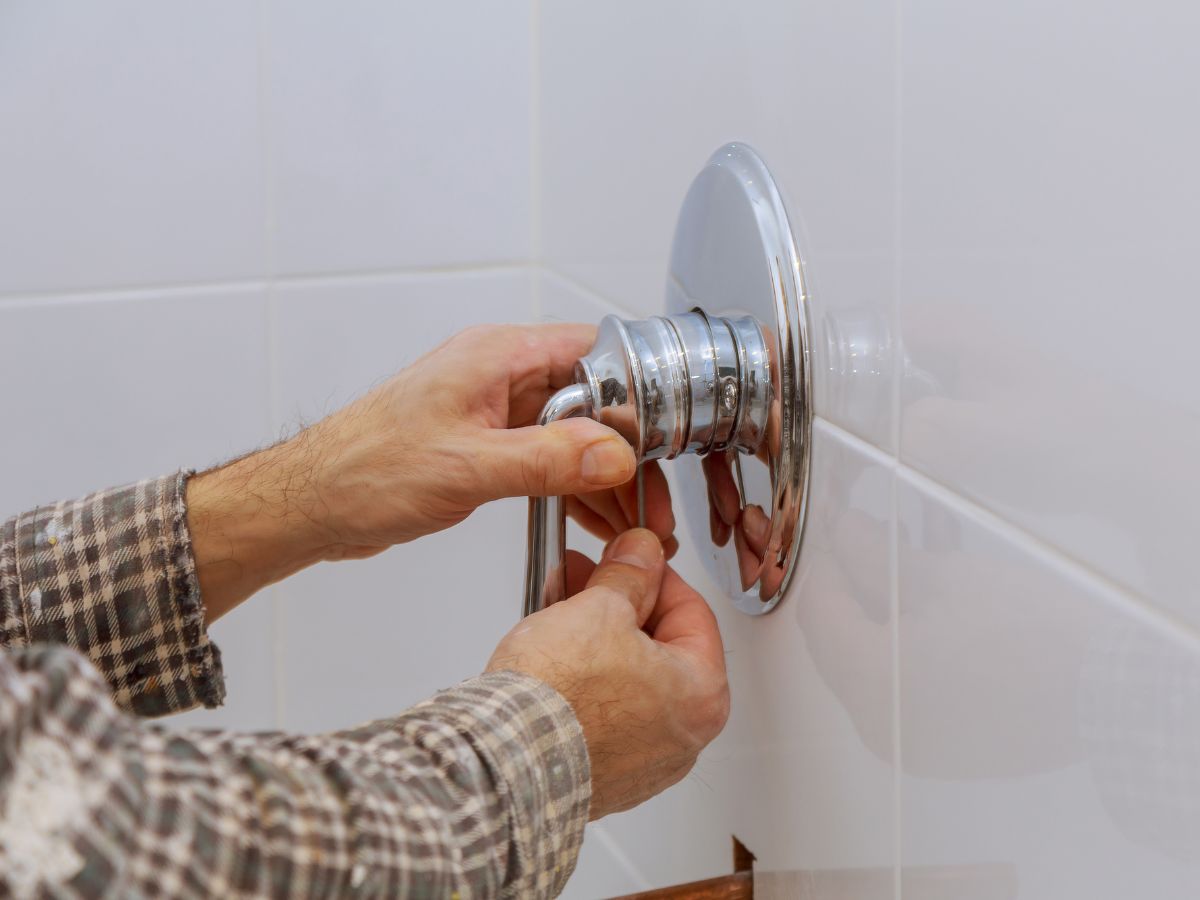Fixing Leaky Caulking in Your Shower
Bathrooms are the source of some of the most common leaks in the home. Constant use of wet areas like showers takes its toll on caulk and other sealants.
You can call a plumber for help if your shower or bath develops a leak. But you don’t need professional support to fix these sorts of problems – replacing leaking caulk is a DIY-friendly project.
In this article we’ll provide step-by-step instructions on how to fix leaky caulking in your shower, ensuring your bathroom is watertight for years to come.
How to Choose Bathroom Caulking
It’s important to choose the right caulking product when working on your bathroom. Not all types of caulking are intended for wet areas. When choosing bathroom caulking, look for a product that is:
Recommended for use in showers and wet areas
- Resistant to mould
- Has a long working life
- Is white, rather than clear
There’s no such thing as a perfect seal. This is why we recommend choosing a white caulking, rather than a clear product. Clear caulking tends to discolour and will show any mould that’s growing behind the joint. White caulking looks better for longer.
If you’re unsure of what to buy, try giving your local plumber a call. While plumbers usually tackle bigger jobs like hot water installation Brisbane, most won’t mind giving out a bit of advice over the phone.
What You’ll Need to Fix a Shower Leak
It should only take 2-3 hours to replace the caulking in a shower cubicle. You’ll need a few tools to get the job done, including:
- Bathroom caulking
- Caulking gun
- Wooden tongue depressors
- Razor blade with a scraping handle
- Methylated spirits
- Clean cloths
- White vinegar
We recommend buying at least two tubes of caulk. It’s not the end of the world if you run out of caulk part way through the process, but it can seriously slow you down if you have to run out and buy more materials.
Any unused caulk can be resealed inside its tube using a cap or some heavy-duty tape. This caulk will stay good to use for several months, and it may be useful if you need to touch up your repair job.
How to Fix Leaky Caulking in Your Shower
1. Remove Old Caulking
We begin the process by removing old caulking. This is done using a razor blade (with a scraper handle for safety). Work the edge of the blade underneath the bead of caulk, and scrape along the length of the joint to break the seal between the caulk and the tile.
Do this on both faces of the joint. You should be able to pull out the old bead of caulk by hand once it has been cut free of the tile.
With the bulk of the caulk removed, you can use a razor blade to scrape away any remaining lumps. You’re unlikely to be able to remove 100% of the old caulk this way, but do your best.
Any remaining bits of caulk can be removed using a cloth and methylated spirits. The spirits should soften the old caulk, allowing it to be scrubbed away from the surface.
2. Clean Up Any Mould
If your shower is leaking, chances are that there’s mould growing behind the caulk. Now’s your chance to get rid of it.
Using a scourer and white vinegar, scrub the joints and remove as much of the mould as possible. Household vinegar is a mild acid that kills mould, which should prevent it from growing back once the new caulk is added.
3. Allow Bathroom to Dry Fully
The shower cubicle needs to be completely dry before new caulking is applied. That means you won’t be able to use the shower for 3-4 days before tackling the project. If possible, you should also avoid using other parts of the bathroom, such as a bathtub, as this can create a humid environment.
This process can be sped up using a hair dryer or heat gun. Use the hairdryer to dry out the joints in the shower. Do this carefully if you’re using a heat gun. Excessive heat can damage epoxy grouts.
4. Apply New Caulking
Cut the tip off the tube of caulk and load it into the caulking gun. If you’ve never used a caulking gun before, take this opportunity to run a bead of caulk along a scrap piece of paper. This should give you a feel for how much material comes out of the tube.
Now, press the tube against the joint in the tiles, holding the gun at a 45 degree angle. Squeeze the handle gently and begin dragging the tip of the tube along the length of the joint.
Try to apply an even amount of caulk. Too much can be a problem to clean up, too little caulk and you won’t have enough material to seal the joint.
Work along one joint at a time, applying and then smoothing out the caulk. Most bathroom caulking only has a working time of 5-15 minutes before it gets too sticky to work with, so you need to move at a steady pace.
5. Smooth the Caulking
Once you’ve applied a bead of caulk to one joint, take the rounded end of a tongue depressor and drag it through the caulk. This creates a rounded joint and helps the caulk seal against the tiles properly.
If there’s caulk where it shouldn’t be, you can use the tongue depressor to scrape it up, or wipe away the excess with a damp cloth. Make sure you clean up excess caulk before it cures, as it can be difficult to remove after the fact.
6. Allow the Caulking to Cure Fully
Once you’ve applied caulk to the entire shower, you need to allow it to cure fully before using the bathroom again. This takes 24-48 hours, depending on the manufacturer’s instructions.


































